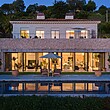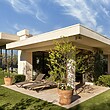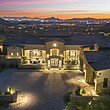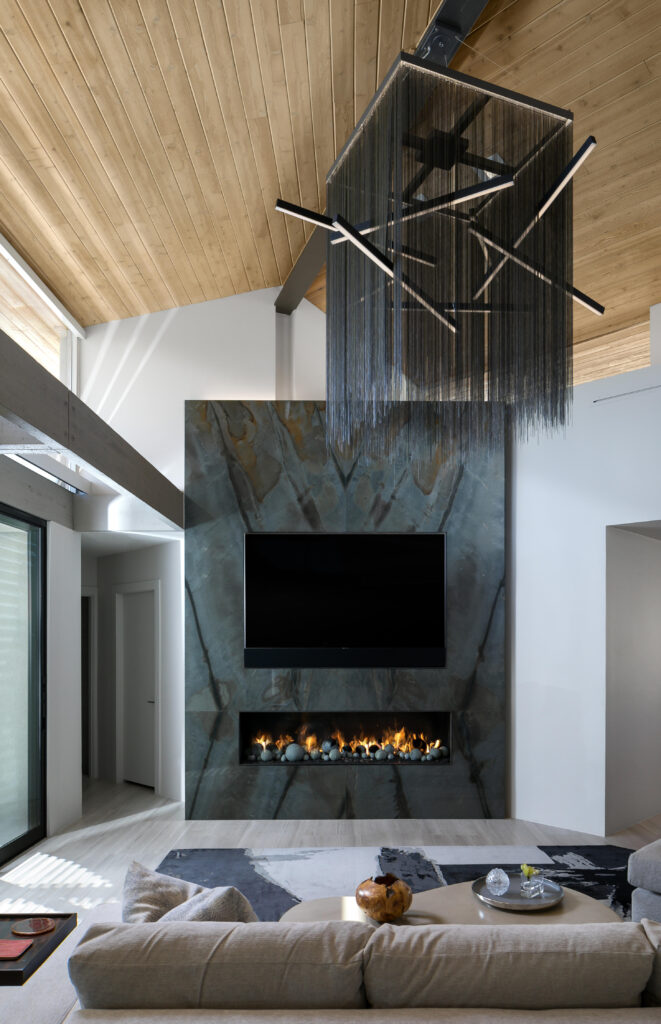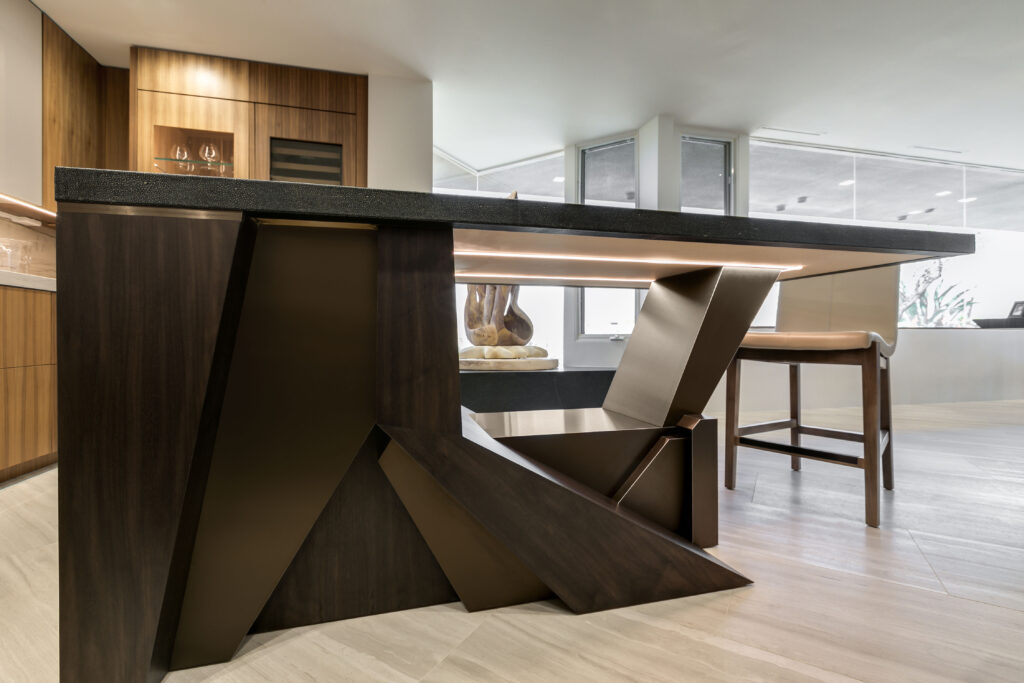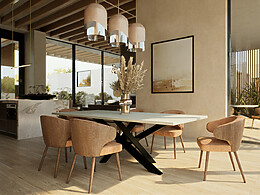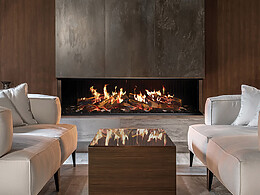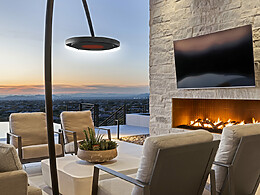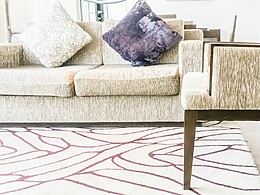Warm colors are hot, green is super cool, security is strong and technology is connecting us to our homes from anywhere. Curves are turning heads, LEDS are heavy favorites in lighting, kitchen drawers are opening new opportunities for convenience and attractiveness, and “granny chic” is young at heart.

After the first appearance of Covid, owners want warmth and color in their homes, says Blake Sutton, principal of Est Est Inc. in Scottsdale, founded in 1959. People want to feel comfortable, uncloistered and welcoming in their homes. “Est Est” is derived from Latin, meaning “It is best.”
In general, Sutton and his team are seeing somewhat larger luxury homes Valleywide, in part another result of Covid and the cocooning it created, and the relative strength of the local high-end real estate market. “Recent increases in home values give people the peace of mind to build bigger and add everything they want when constructing a new home,” he says.
But a larger home doesn’t mean more bedrooms. “We’re seeing a shift from packing in as many secondary bedrooms as possible, to a focus on quality and size, with homeowners opting for fewer,” explains Est Est associate Chris Jovanelly, Allied ASID. He notes that today’s secondary bedrooms are larger and have larger walk-in closets and ensuite bathrooms.
Colors, Textures & Finishes
Color is surging. Isabel Dellinger Candelaria, founding principal of Earth & Images in Phoenix, notes that navy “is starting to soften the stark black-and-white trend that’s been going on for a while, and touches of paprika-spice hues are giving our living environments passion and vibrancy. And every shade of green is also happening.” The studio is celebrating 31 years in 2023.
Tanya Shively, ASID, LEEP AP, principal of Sesshu Design in Scottsdale, agrees. The 18-year-old studio celebrates the artistry of 15th century Japanese painter Toyo Sesshu. “Overall, I am still seeing most people want a light, bright feel but using off white and light natural tones. Natural oak floors are much more popular than grey wood, and cabinetry features light natural finishes with simple clean lines,” says Shively, who started her design career in 1997.
Textures in neutral colors are popular, she adds. Heavy bouclé and woven textured fabrics are everywhere, primarily in lighter and warmer neutral colors –– cream, beige, sand, taupe –– rather than grey.
And Candelaria says, “Textiles are textural, patterns are for walls and the sparkle comes from glass and silvery metals.”
In the kitchen, white cabinetry or light/medium tones are strong, says Susie Hersker, ASID, founder of 35-year-old Susan Hersker Interior Design in Scottsdale and the 2007 winner of the Master of the Southwest Award from Phoenix Home & Garden magazine. Because the cost of wood has risen so much, many people are choosing man-made varieties, particularly in laundry rooms and secondary bathrooms.
Sutton’s Est Est team is seeing a trend in mixing metal finishes, and multiple metal finishes on plumbing fixtures and lighting are becoming more common. “More and more manufacturers are expanding their finish options and offering customization with using multiple finishes,” he says.
Marble and wood are appearing in faucets and handles, Sutton adds. The controls incorporate stone inlaid into the knobs and levers or are all stone. Gold metal finishes are becoming less yellow and more muted, while silver finishes are becoming warmer. The warmer silver tone of nickel is seeing preference over chrome.
Once a trendsetter, black-and-white faucets look dated now, Hersker says. “Polished metal finishes are still in demand on plumbing fixtures, in particular, chrome and polished nickel, and soft gold tones remain popular in the bathroom.”
Main bathrooms are airy and bright with a focus on pure natural materials, Shively explains. Large-format tile or slab stone walls have replaced “ditsy mosaics” in showers and backsplashes. “Everyone hates grout!” she says.
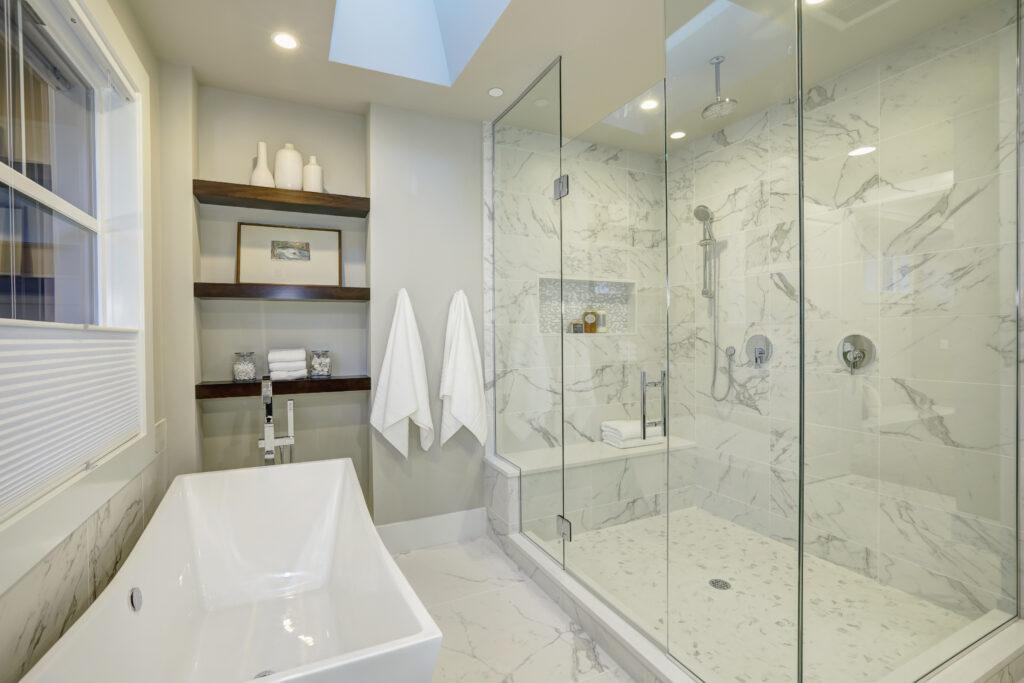
Light countertops are popular, such as polished quartzes. “Marble still is popular in bathrooms but less so in kitchens because of maintenance issues such as scratching in polished varieties and staining,” she adds.
Elaine Ryckman, a 16-year associate at Hersker Design, says, though, that people are moving away from some inexpensive man-made quartz countertops because they are “perceived as commonplace and not something you would put in a luxury home. Higher-end products such as Dekton are great in some applications. It’s a much superior product, ultra-compact and carbon neutral.”
Curvaceous Furnishings & Flourishing Flourishes
Curves are today’s big angle in interior design, and rounded and softer shapes in furniture and accessories and lighting. Shively says, “Ball-shaped pillows are hot again! I think this is an emotional response looking for comfort after a few hard years. It is also the pendulum swinging away from very hard-lined, straight boxy forms.” She adds that upholstered furniture in particular is much softer and more rounded, and sofas can be curved with rounded arms and rolled cushions.
Hersker says, though, that Modern and Mid-century Modern styles are still popular with their clean lines; modern flush doors, for instance, are still popular.
The firm is also witnessing a GrandMillennial trend, “granny chic,” in retro and vintage accessories such as formal dishes and pillows and less so on the big-ticket items. Shively notes, in this spirit, that a narrow, even pencil-edge, Shaker-style door feels new, but it goes back to an earlier time and more traditional perspectives.
The overall scale of the furniture pieces has changed, too. Deep seating and lower seat heights and back heights are in. Cocktail and side tables are styled to coordinate with the lower heights. “Essentially the overall footprint of the furniture is increasing, while the height is decreasing,” Jovanelly says.
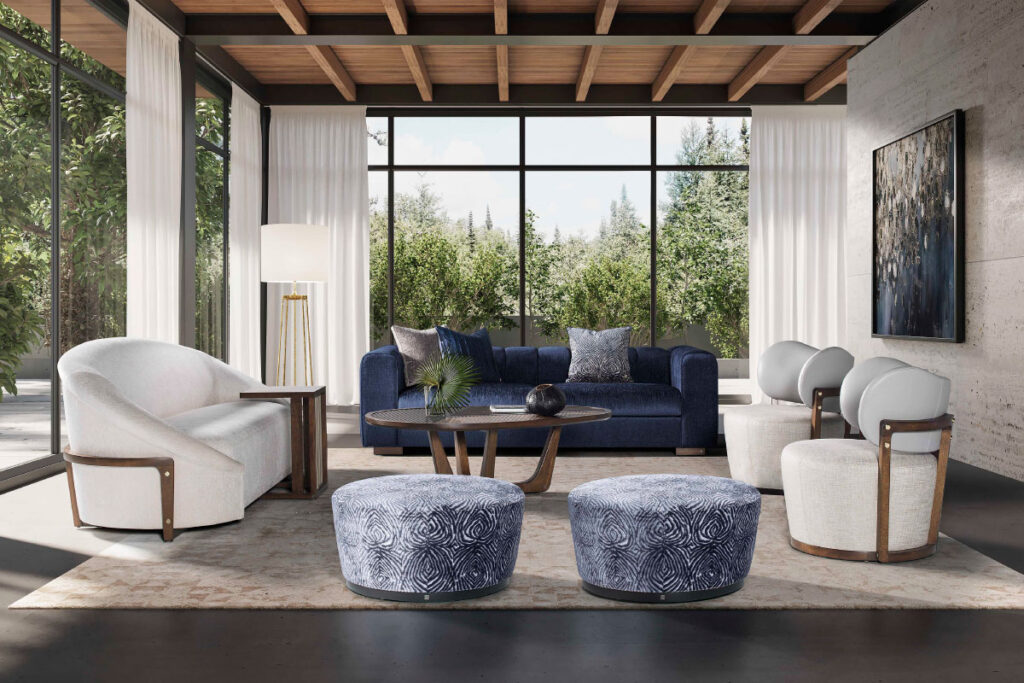
Mixing furniture materials in furniture is trending, he adds. “We’re seeing luxurious marbles paired unexpectedly with rich metals like brass and bronze. Plush fabric like velvet is huge right now.”
Hersker notes that people are leaning toward light-medium wood tones, while Candelaria-Dellinger is seeing more demand for deeper wood tones.
“For upholstery, people are requesting fabric rather than leather to reduce costs. Comfort and durability are both very important,” Hersker explains, noting that the firm recommends Alta Stain Guard on most fabrics as it protects from stains and extends fiber life.
Trims and embellishments, such as fringe, cords, bullion and decorative tapes, which add interest on simple-plan fabrics, are surging. “This seems to be a desire for something different, and it’s been a couple of decades since these were last extremely popular,” Shively says. “Younger people especially see them as fresh and different.”
LEDS Take the Lead
Sutton and Est Est often program large chandeliers to anchor a room, and he enjoys adding recessed lighting, pendants or wall sconces in hallways, for example, to layer spaces for drama. LED strips along a counter can change the entire mood of a room, for example, he says.
LED lighting has facilitated innovation in that it can be made into a variety of different light sources, Jovanelly adds. Color-tunable LED lighting and warm-dim options allow control of how white or yellow the color of the light is. LED lighting can dim warmly, more accurately matching what an incandescent bulb does, becoming warmer and moodier in color as it dims. And LED lighting is much more affordable than in the past and lasts longer.
Dimmable recessed lights are the “new edge” in lighting systems, says Hersker. They are built in, so you can’t see the source, such as under the cabinets, along the steps and for wall washing.
In addition, window treatments and sliding doors can be automated while light switches/plugs can be condensed to one area, and charging stations can also be added to the home so cords remain out of sight, Sutton explains.
Jovanelly says that special outlets for plugs and USB can be added to essentially any piece of custom furniture, noting that he adds them regularly to nightstands. They can be flush with the wall and be mudded into the drywall for a seamless appearance.
Technology is a central component of any new or redecorating scheme. “Wire for any possibility in new construction,” says Ryckman. “Technology is moving faster and faster, so homeowners want to be prepared for any new thing that comes along.”
One element is security. “Post Covid, our clients of all ages are looking for privacy and protection,” she says. “Smart homes with integrated alarms, Ring doorbells, exterior cameras front and back, solid gates on driveways and fenced courtyards are very popular.”
Changing Times, Changing Spaces
Kitchens are featuring innovations in cabinetry, explains Ryckman. “We are moving away from the traditional lower cabinet style: a drawer on top and two doors below, with shelves behind the doors. People find it’s hard to access stuff shoved into the back of the bottom cabinets, so we are seeing a trend to where the lower cabinets are mostly drawers. The new design offers easier access, maximizes storage and thus reduces the need for a lot of upper cabinets. Fewer upper cabinets make the entire space seem more open and spacious.”
Bar-height seating of 42 inches in the kitchen seems to have passed, noting that Est Est is keeping countertops consistent at three feet, Jovanelly says.
Health and wellness are still in focus. Infrared saunas are often requested, and steam showers and spa-like primary baths are more desired than they have ever been, Shively adds.
Dining rooms are becoming larger and breakfast nooks are going away, as homeowners are opting for more practical second islands or larger islands with more seating, Sutton explains.
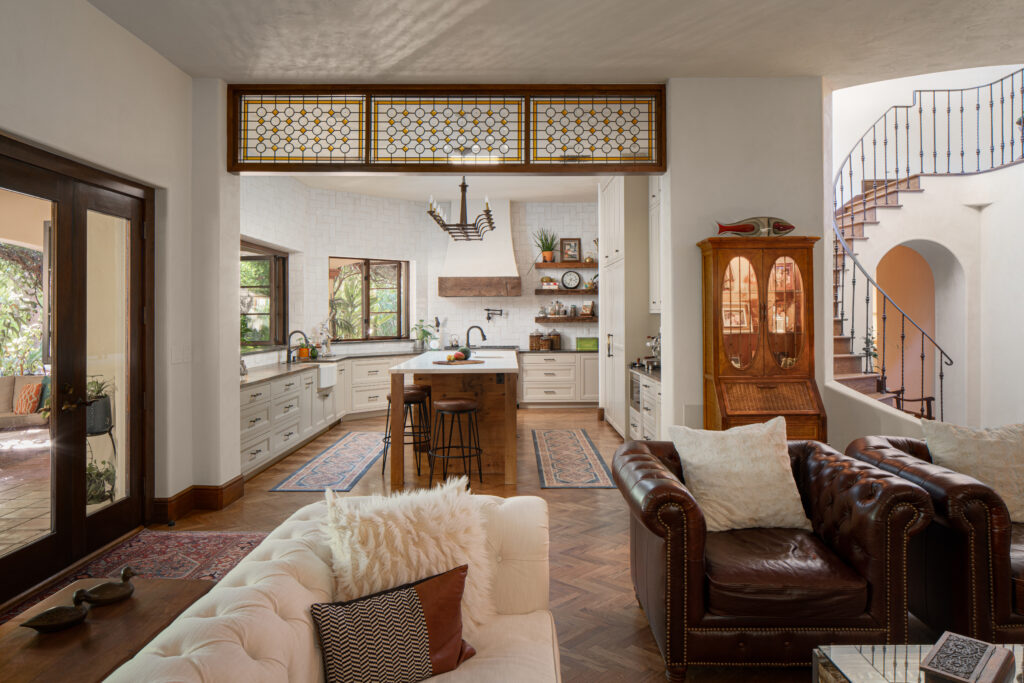
Guest rooms offer special experiences. People are making guest suites and houses more luxurious, some with themes and spa areas to add to the welcome, says Shively. Sutton notes that casitas are now often incorporated with the main house instead of being separate.
Generationally, Boomers want one-level homes with extensive open space and ADA retrofits such as wheelchair accessibility, grab bars and other universal design features, Hersker explains. Millennials, in turn, are looking for family-friendly and functional spaces and dedicated rooms such as dual offices and separate children’s areas.
The Gen-Zers are first in line for those curves, in furniture and mirrors, in particular, says Sutton. “They are tired of all the straight lines.”
This story appeared in the AZ Foothills Home & Design, Best Places to Live issue. Read the full issue here.


